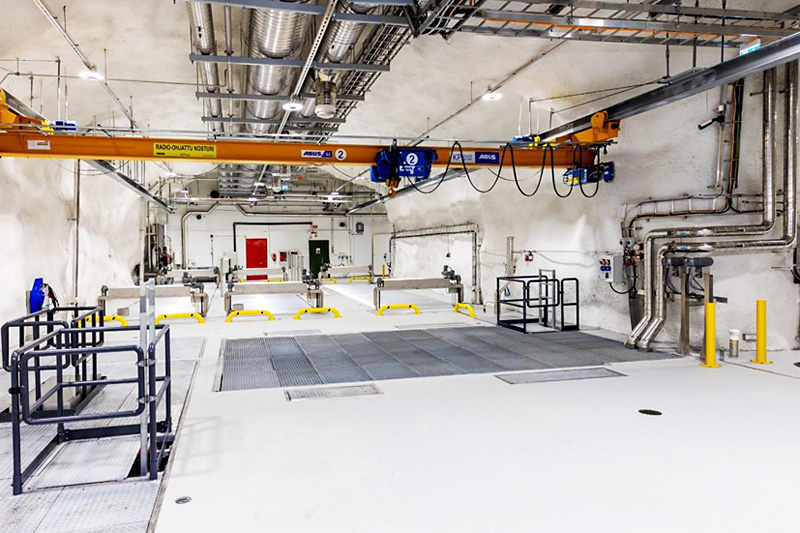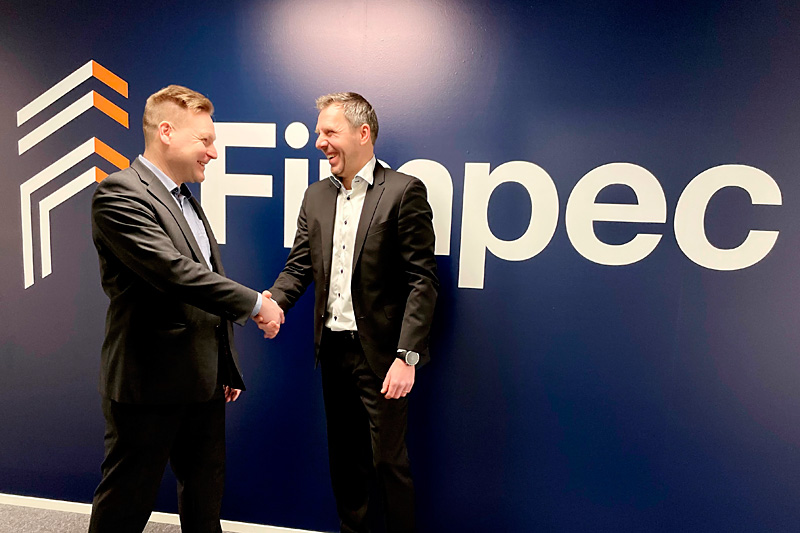Fimpec acted as BIM coordinator for the Katajanokan Laituri project, winner of the Tekla BIM Awards public vote and honorary mention

The modern office building Katajanokan Laituri, set to be completed in Helsinki in the summer of 2024, performed excellently in the Tekla BIM Awards Finland 2024 competition, which showcases Finland’s finest and most modern construction projects. The project won the public vote and received an honorary mention. Fimpec served as the BIM coordinator in the project, utilizing advanced 3D design and Building Information Modeling (BIM).
Commissioned by the pension insurance company Varma, Katajanokan Laituri is a modern office building located in a prime spot by the sea in Helsinki’s Katajanokka district. The site offers approximately 16,000 square meters of rentable space. The main tenant is Stora Enso, and the building will also house a Sokos hotel, company offices, and public spaces.
The project aimed to construct a high-quality and climate-responsible office building, reflected in the choice of materials, design, and multi-use spaces of the timber-framed structure. The entire design process took place in a 3D environment, and the modeling was exceptionally detailed, down to the level of details. In addition to design disciplines, suppliers of wooden and steel structures, shared support solutions, facades, weather protection, and a parking robot also modeled their parts.
The Tekla BIM Awards Finland competition, in which Katajanokan Laituri participated, is held annually to recognize construction projects that make the best use of model-based information. In addition to the jury’s selections, the competition also includes a public favorite.
Advanced BIM modeling praised in honorary mention
The honorary mention stated that the Katajanokan Laituri project comprehensively utilized modeling, considering the complexity of the foundation construction and the specific characteristics of the materials. The project emphasized decentralized design and the contribution of component suppliers in manufacturing information, which enhanced installability.
On-site, 150 people utilized model information and phased schedules. The installation sequence was modeled-based, guiding factory production. Advanced BIM modeling employed algorithms, and production models were made directly from IFC. The collaboration between different organizations was excellent, maintaining the project’s agility and the ability to respond quickly to changes.
The jury also praised the project’s sustainability. Its planned lifespan is 100 years. The carbon footprint model-based calculation was done according to the newly published Rava3Pro TATE code. The beautiful building fits almost perfectly into the urban landscape.
Public vote favorite praised for various aspects
Voters in the public vote justified their choice of Katajanokan Laituri with comments such as:
“A complex project where BIM models have been actively and diversely utilized.”
“A masterpiece of timber construction.”
“The project represents carbon-neutral and sustainable construction and brings new life to Helsinki’s downtown waterfront. I appreciate the project’s innovation and environmental friendliness.”
“Cutting-edge technology used in the design. The construction site’s installation work planning effectively utilized the BIM model.”
“The project harmoniously integrated various materials such as wood, concrete, and glass. The BIM model was clearly used for many aspects of construction from preliminary planning to the finished building.”
“A modern office building located in the iconic national landscape of maritime Helsinki’s South Harbor. Precise modeling that also considers the surrounding environment as part of all construction and technology.”
The important role of the BIM coordinator
The honorary mention highlighted that the BIM used in the project is a digital three-dimensional model containing all the information needed from project planning to implementation and maintenance. It allows for visualizing the building’s exterior and interior shapes during the design phase, helping to identify potential risks and issues before construction begins. BIM also helps optimize project costs and schedules by enabling precise planning and cost estimates.
To fully benefit from BIM, it’s crucial that the plans of different parties are compatible. This is best ensured by involving a BIM coordinator in the project, a role Fimpec fulfilled in the Katajanokan Laituri project.
“The BIM coordinator defines the common rules for BIM for the project and ensures they are followed. They also define the information content of the models and project coordination. Additionally, they perform clash detection on the models produced by the designers and review them with the design team. This ensures that the designers’ plans are more compatible with each other, particularly supporting the lead designer. It also adds value by correcting conflicts early in the project, leading to cost savings,” says Nikolaos Avanidis, Fimpec’s BIM Manager, who served as the BIM coordinator for the Katajanokan Laituri project.
He continues by saying that Katajanokan Laituri was a very interesting and appropriately challenging project. Challenges included the building’s shape and the materials used. The importance of effective cooperation and everyone doing their job correctly and on time was emphasized.
“Our broad expertise and experience from over 400 BIM projects helped us complete the task. Personally, I found it useful that I have extensive experience in the construction industry in various roles as a designer, site engineer, and coordinator. It helps in seeing and understanding things.”
For more information about Fimpec’s BIM coordination services:

Johan Appelqvist
Business Unit Director,
Industry and Insight Services
PROJECT MANAGEMENT SERVICES
+358 50 466 0907


